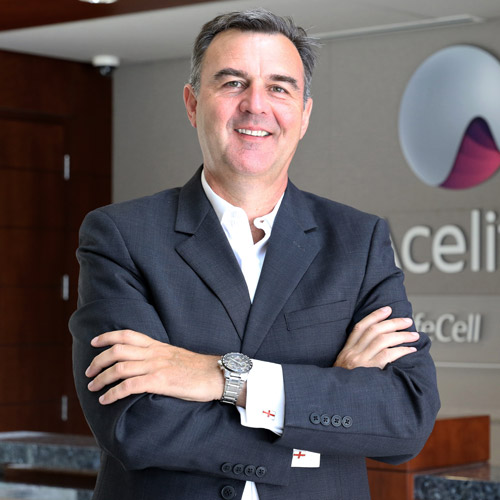The race to capture solar energy in the United States is something of a modern-day gold rush, with 4,000 major solar projects—many at utility scale—listed in the database of the Solar Energy Industries Association. These projects represent 72 gigawatts of capacity, which is enough to power 52.2 million households.
Whether the rush and increased demand for more solar power in such an accelerated time frame is overwhelming for the companies that design, build, and maintain those installations is another question. Nevertheless, Swinerton Renewable Energy (SRE) is up to the task, says Erik Johnson, director of planning and engineering for the San Diego-based utility.
“It’s extremely fun here,” he says, adding that the trick is to have “very good people and very good data.”

How does Johnson find high-quality people and acquire data to do this right?
For starters, Swinerton Inc.—the parent company of SRE—is a 100 percent employee-owned company, which Johnson says helps prevent silo-style thinking between various departments of the company.
“We have highly qualified engineers and field people, hired at the highest levels of competency,” he says. “Their motivation matters. We put their ideas to work.”
SRE grew from five to 158 people in just a few years, and also depends on another 500 to 600 professionals in design, manufacturing, and electrical engineering from partner companies. This includes Blymyer Engineers, an exclusive partner to Swinerton that Johnson says grew substantially along with SRE. Johnson credits Blymyer for thinking and working collectively as a team.
SRE’s data comes from monitoring technological performance and controlling power production. Its proprietary SOLV system does that to a significant degree, providing feedback both on energy plant performance and anticipated failure. Preemptive or faster fixes mean optimal efficiencies overall.
Beyond operational efficiencies, the degree of interest, favorable economics, and public policy initiatives that support renewable energy are the key drivers of this industry, Johnson says. As falling costs in materials coincide with reduced construction expenses, both solar and wind energy have become more attractive to public utilities and large private consumers, particularly with energy-intensive industries.
Among SRE’s advantages is its standing as an EPC contractor, meaning it’s financially enabled to handle engineering, procurement, and construction, as well as commissioning, before handing over the completed project to the client. For projects on such a massive scale, the risks to profitably are high.
“Understanding the geographical and geotechnical issues of a 500-acre site—such as how sandy or rocky the soils are, which can vary within a site—require us to interpolate measurements,” Johnson says.
He points out how smaller projects in the past allowed for some errors.
“In a 1-MW project over 10 acres, we could absorb the costs of a poor technology choice or a failed piece of equipment,” Johnson says. “But with a 250-MW farm on thousands of acres, a bad choice in technology or failure of a component can hurt you on a massive scale.”
Springbok 1 & 2 solar farm
Kern County, California
A new power source in California is the Springbok solar farm. Springbok 1 and Springbok 2, which were constructed in 2015 and 2016, respectively, are located in Kern County, California, about 70 miles north of Los Angeles. With a combined output capacity of 330 MW of direct current, the solar farms will provide sufficient energy to power 110,300 households in Los Angeles.
The engineering, procurement, and construction of the Springbok project were provided by SRE. Financing, permitting, and a power purchase agreement with Southern California Public Power Authority were the collaborative efforts of several banks and private equity investors.
Each phase generated 700 direct and indirect jobs in the rural county. The projected cost of energy production, at $58.65 per megawatt-hour, is less than the cost of coal- and gas-fired plants—crossing an important threshold. All told, the farm is made up of about 600,000 PV modules, installed on solar trackers across three square kilometers of non-productive, formerly agricultural land.
Red Horse 2 solar and wind
Cochise Country, Arizona
Another Alternative power source combines both wind and solar at the Red Horse 2 project in Cochise Country, Arizona. SRE designed and constructed both parts, which includes 16 wind turbines—each standing about 450 feet tall—that have a capacity of 30 MW. An additional 41 MW are generated two miles away at the project’s companion solar farm, which covers 650 acres.
“This originally was envisioned as a wind project,” Johnson says. “But because solar would work so well
here, [we decided to add it]. The characteristics of the land drove it.” He adds the turbine and PV facilities share a single point of interconnection in the project substation.
According to the senior director of energy supply for Tucson Electric Power Co., the utility that purchases the electricity, the cost of power purchase contracts such as this from the investor-owners is about half of what it was just a few years ago—about five cents per kilowatt-hour. The economic impact on the region in salaries—from 800 construction and installation jobs—equipment purchases, construction materials, and secondary spending is $110 million.


SOLV system: Better data, better performance
Swinerton Renewable Energy’s SOLV platform, which stands for “system operations live view,” is a utility-scale monitoring platform. SRE uses it in conjunction with its operations and maintenance services on more than 75 solar projects, stretching from Toronto to Hawaii.
SOLV monitors the performance of operating electrical-generating plants, data analytics, asset management support, in-field technical support, and the supervisory control and data acquisition (SCADA) that enables remote monitoring and control of industrial processes interacting with the physical world. Weather conditions that are cloudy or windy can affect hybrid solar and wind-power generating facilities.
As Erik Johnson explains, “Modules become dirty, and [are also affected when] it rains.” He adds that solar farms are living, breathing power producers—suggesting that few, if any, components are static.
The base of SOLV is in SRE’s San Diego headquarters, in a designated network operations center. On several 60-inch screens, division staff checks for adverse occurrences and other vital signs that need to be addressed with onsite maintenance. On their own kiosks, clients can check current and lifetime generation, local weather conditions, environmental benefits (carbon offset calculations, homes powered), specific MW output, and other data.
“Historical data also helps you figure things out,” Johnson says. “This kind of information is critical for us to provide higher levels of energy production. High-quality, reliable measurements allow us to drill down through data analytics to determine the daily health of the planet.” He indicates that even small sets of measurements can sometimes provide predictive information.
It’s that kind of data that makes Johnson—and many others, including investors—very optimistic about the future of renewable energy.
“I see modules achieving higher rates of power,” he says. “Batteries will even out supply, making energy more dispatchable.”
Already, the SOLV monitoring has made the Red Horse 2 project in Arizona more reliable, Johnson says, because SRE can balance the wind turbine generation with solar generation to provide more predictable energy production.
A message from Blymyer Engineers
Blymyer Engineers has delivered multidisciplinary engineering services to industrial and commercial clients worldwide since 1961. We take projects from concept to completion, providing exceptional service at every step along the way.
We are experts in solar power engineering. We have completed more than 500 projects and 2.3 GW of engineered solar plants worldwide. Our engineers are licensed in over 30 states.
Website: blymyer.com
LinkedIn: blymyer-engineers
Phone: (800) 753-3773



